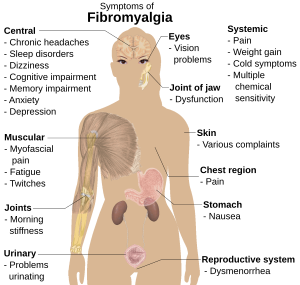Thursday, October 29, 2009
Embracing My Life as a "Fibromyalgia Scientist"
There is so much about having fibromyalgia that I admit I have no control over. Through the experience of living with fibromyalgia for the past five years, I know firsthand that there isn't a lot that medical professionals have to offer me in the way of treatment or cure for my illness. Five years of living with fibromyalgia taught me that the best approach to managing my fibromyalgia symptoms was learning how to become a fibromyalgia scientist.
In many ways I feel better knowing that the answer to managing my symptoms is in my hands. It was difficult to be constantly disappointed when medical interventions fail to bring any relief. It was also hard on me physically to attend numerous medical appointments every week. The self-help approach of the fibromyalgia scientist allows me to problem solve at home, at my own pace, using online resources and the support of peers living with fibromyalgia like me. Incorporating the advice and guidance of my healthcare providers is still an important part of my over all fibromyalgia management. However, as a fibromyalgia scientist, I focus on reporting my successes in managing my symptoms when I go to my doctor appointments rather than just listing all my troublesome symptoms hoping that the doctor has something to offer me.
As I mentioned in my post How to Become a Fibromyalgia Scientist, perhaps the idea of being a fibromyalgia scientist appeals to me so much because I found myself drawn to the study of science in high school and college. While in school, I became familiar with the scientific method of identifying a problem, creating a hypothesis about the cause of the problem and then setting out to discover if that hypothesis was correct. Today I use that same method to identify a symptom that needs better management, list possible factors contributing to the worsening of the symptom, brainstorm ideas for how to combat these factors and then implement these ideas one at a time to see if they make a difference.
For example, let's take my symptom of chronic and persistent fatigue. I began by observing when my fatigue worsened by logging my daily activities over a period of several weeks. It became clear from my logs that there was a limit to how much I could do in a day and anything over that limit worsened my fatigue 12 to 72 hours afterwards. Then came some brainstorming about strategies I could use that respected my limits and allowed me to accomplish tasks and enjoy some leisure time. Strategies like: breaking bigger tasks down into smaller pieces and completing them over several days, limiting myself to 15 minutes of activity followed by a break (my 15 Minute Rule), modifying activities so that they could be completed in an energy saving seated position and delegating or asking for help with tasks that were too difficult for me to complete on my own. With ideas written down in the list, I then began implementing them to see which ones worked and which ones did not.
I was fortunate to be referred to the Chronic Pain and Fibromyalgia Program at the Cedars-Sinai Medical Center in 2006. Their program, consisting of instruction from professionals in the physical therapy, occupational therapy and psychology fields, got me started thinking like a fibromyalgia scientist. My first accomplishment as a fibromyalgia scientist consisted of creating a container vegetable garden, which took my love of gardening and transformed it into a fibro-friendly, seated activity. But it was in the monthly alumni group that followed this six week program that I heard about the CFIDS and Fibromyalgia Self Help online program that really helped me evolve into a full-fledged fibromyalgia scientist.
I acknowledge that I will be a fibromyalgia scientist for as long as I have fibromyalgia. The nature of fibromyalgia is that it is unpredictable; new symptoms can emerge, existing symptoms can worsen and factors out of my control, like the weather and catching a cold, can affect my symptoms both in the short term and the long run. Viewing my symptoms as a puzzle to solve rather than an inconvenience to endure helps keep me focused on learning to cope with my fibromyalgia and living my best life despite it.
For all these reasons, I embrace being a fibromyalgia scientist.
TIP: Be proactive about your health care. Ask your rheumatologist or chronic pain specialist for information about and a referral to any chronic pain rehabilitation program in your city. If this resource is not available where you live, consider the online CFIDS and Fibromyalgia Self-Help program, which draws participants from around the world. Use these resources to learn how to become a fibromyalgia scientist too.

Like this post? Then please...

Submit it to your favorite social sites.
Share it with PrintFriendly alternatives.
Subscribe to:
Post Comments
(
Atom
)

![Reblog this post [with Zemanta]](http://img.zemanta.com/reblog_b.png?x-id=d356e68e-9c9e-44c9-9333-021f6b1d11a8)

1 comment
I love your blog! I too am a UCLA alumni...graduated in 74. Lived on Veteran Ave and had a great time! Now I'm back in Las Vegas and diagnosed with Fibromyalgia last year. Good to "meet" you!
Post a Comment